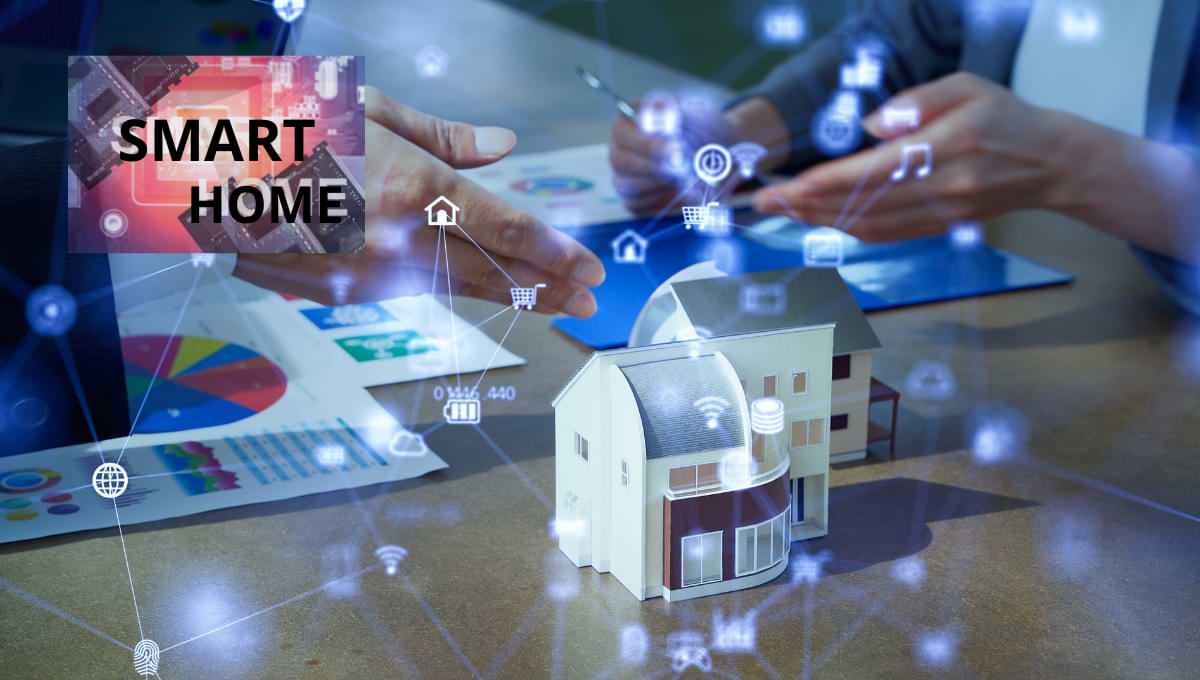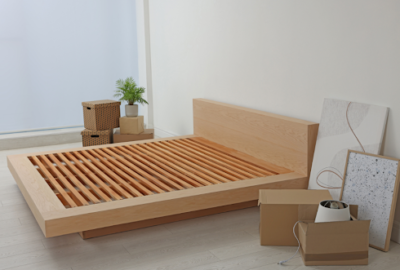Smart Automation System Designing In Your Home
Smart homes are a fascinating trend that will only get more popular in the coming years. Integrating smart devices into your smart home allows you to easily control everything from your lights to your heating and cooling systems. Not only will this make life easier for you, but it can also help keep you safer and more secure. If you’re interested in getting started with smart homes, look at some of the best devices on the market today! To design a smart automation system, you must consider the components of the overall system. In addition, you’ll need to consider the type of automation you want and the hardware and software requirements. Once you’ve got an idea of what you need, it’s time to start thinking about how to structure your system.
One approach is to create a modular system. Each component can be added or removed without affecting any other system parts.
What Is Home Automation, And What Are The Benefits
Home automation is a way to make your life easier by automating tasks you regularly do. For example, you can turn on the lights when you get there, change the temperature depending on the season, and activate security systems when you leave. The benefits of home automation include reducing energy consumption, creating a more comfortable environment, and improving security.
There are many different types of home automation systems out there, but some of the most popular include:
- Smart Home Platforms allow you to control devices from one central location. Some popular platforms include Amazon’s Alexa and Google’s House.
- Third-Party Devices: You can purchase third-party devices that integrate with your smart platform. These devices range from alarm clocks to thermostats to security cameras.
- Software Some automation systems, such as Apple’s House Kit, are built into the operating system of your device. This allows you to control devices through Siri. The best thing about home automation is that it is relatively inexpensive.
What type of home automation system should you build?
When it comes to house automation, there are a few different options to choose from. You can either build your system or purchase one pre-made. If you feel particularly tech-savvy, you could build your system. But if you’d like to stick with a pre-made option, there are a few different types to consider.
One option is an app-based system. These systems allow you to control your smart house via your smartphone or tablet. They can be convenient, but they also tend to be more expensive than other options.
Another option is a voice-based system. This system requires no computer or smartphone – you only need a microphone and speaker. This system is popular in Europe because many still use landlines instead of smartphones.
Planning your home automation project
When designing your automation project, remember a few things:
- Think about what you want your system to do and how you will use it.
- Create a plan for installing and configuring your devices.
- Test your system regularly to ensure everything works as planned.
Understanding your needs and goals
When it comes to house automation, the first step is understanding your needs and goals. There are a few things to think about when designing your system: What primary functions do you want the automation to perform? How important are aesthetics and convenience to you? Do you have any specific preferences or requirements for your system’s design?
Once you have determined your needs and goals, you can begin to research which type of house automation system is best suited for you. Several options are available, including traditional hub-and-spoke systems, single-purpose controllers like Z-Wave or Zigbee, or a modular system that allows for more flexibility and customization. Once you decide on a system, read the associated documentation and tutorials to understand how it works.
The different types of sensors and actuators
There are a variety of sensors and actuators that can be used in smart house automation systems. These include temperature, pressure, light, motion, sound sensors, switches, and buttons.
Some of the most common sensors in smart house automation measure temperature or humidity. These sensors can be used to control the air conditioning or the humidity level in a room, for example.
Other common types of sensors include pressure-sensitive switches and buttons. These switches can be used to turn lights on or off, for example, or to adjust the volume on a speaker.
In addition to using standard physical devices, some people prefer to design their smart house systems using programming languages like Arduino. This allows them more flexibility in how they want their system to work and increases the chances that it will be compatible with other devices in their house.
Home automation software
If you’re thinking about installing house automation software, be sure to read this first. There are many options, and it cannot be easy to decide which is right for you. Smart house automation design is an increasingly popular option, but it’s not for everyone. If you’re ready to start, we’ve got some tips on designing your own system.
When designing your system, it’s important to think about your goals and what features are important to you. For example, do you want systems monitoring things like temperature and humidity? Or do you want something that can turn on lights when someone arrives at the house? Unfortunately, many different house automation systems are out there, so it can be hard to know where to start.
Connecting your devices to your home automation system
When designing your smart house automation system, connecting all your devices is important. This will allow you to control and monitor them from a single location. There are several ways to connect your devices, and each has its benefits.
One way to connect your devices is through an existing Wi-Fi network. This is the easiest way to set up your system, but it can limit how many devices you can connect. This may not be the best option for you if you have a large house or multiple floors.
Another way to connect your devices is through Bluetooth connections. This option is better if you only have a few devices or if they don’t require strong Wi-Fi signals.
Hardware & Software Requirements
You must first assess your needs when purchasing smart house automation products and services. Many options are available, so it is important to do your research.
Below are some general requirements for a smart house automation system:
-A computer with an operating system that supports smart house features such as Home Kit or Android Auto
-A broadband internet connection
-An installed camera or sensors
-An compatible controller or gateway device
Once you have determined your needs, you can look at a smart house system’s hardware and software requirements. Hardware requirements will vary depending on what type of system you want to create, while software requirements will depend on the platform used. Generally, however, most systems require a computer with an operable operating system and internet access.
Building Your Own Smart Home Automation System
Are you interested in learning how to design and build your own smart house automation system? In this article, we will show you how to go about doing just that.
There are a few things that you will need to get started. For starters, you’ll need an internet-connected device or devices that a smart house automation system can control. These devices could be anything from lights to appliances. You can also use apps on your smartphone or computer to control these devices.
Once you have the necessary devices, the next step is to decide what type of system you would like to build. Again, there are several options available, including DIY systems or pre-made systems from companies such as Nest and Amazon Echo.
Tips for Designing an Effective System
When designing an effective smart house automation system, it’s important to keep a few tips in mind. First and foremost, ensure you understand your needs and what exactly you want your system to do. Secondly, create a plan for how your system will function and communicate with each other. And lastly, make sure you have a dedicated person or team who will manage and maintain your system throughout its lifetime. By following these tips, you’ll be able to create a successful smart house automation system that meets your needs and helps take care of your house.
Designing your own house automation system can be a fun and rewarding experience. However, by following some simple guidelines, you can create a functional and stylish system.
Here are some tips to help you get started:
- Start by thinking about what you want your system to do. For example, do you want it to control your lights, the temperature in your house, and the locks on your doors? Or do you want it to make it easier to track when people are coming and going?
- Once you know what features are important to you, start shopping for compatible devices. Automation systems come in many different flavors, so choosing one that fits your needs is important. Smart homes’ most common devices include light switches, thermostats, door locks, and security cameras.
- The next step is to install the hardware. Next, you’ll need some hub to connect all of your devices, and this can be a standalone device or may work as part of a network. Some of the most popular hubs include the Wink Hub or SmartThings Hub.
Safety
The idea of a “smart house” is becoming more popular with consumers. This house automation involves installing systems to control lights, thermostats, security cameras, and more. There are many different ways to go about designing your house automation system, and many safety considerations should be made when doing so.
Here are some tips for ensuring your smart house is safe:
- thoroughly research the various types of sensors and devices you will use in your system; make sure they are compatible with one another and with the services you plan to activate through your system.
- choose a secure wireless protocol for your network; avoid using open or unsecured protocols like Wi-Fi or Bluetooth. Wired connections should also be used where possible to increase security.
- utilize smart house hubs and gateways that can monitor your homes, such as the Wink hub, which you can pair with various devices and sensors.
Accessibility
Most people are familiar with the basics of house automation. However, Smart home technology makes it easier for everyone to create systems that manage their homes, possessions, and daily lives. There are many different types of systems, and each has its advantages and disadvantages.
Several factors to consider when designing your system include a budget, skill level, and preferences. Some popular options include voice recognition software, house security cameras, smart locks, and thermostats. In addition, it’s important to consider who will be using the system and their needs. For example, if you have children in the house who like to play video games during school hours, you might want to install a home security system with motion detection sensors.
How to make your home smarter
If you’re looking to make your house smarter, there are a few ways you can go about it. You could buy an automated system or build your own from scratch.
Building your system is the option for those with a technical bent. This involves installing sensors and connecting them to software that will allow you to control everything from your lights to your heating and cooling systems.
There are many different options for automating your home, so it’s important to find the right one. If you’re unsure where to start, plenty of resources are available online.
Smart lighting
Now that smart house automation is becoming more mainstream; it’s important to know what kind of system will fit your needs and budget. Several options are available if you want to control everything from one central location or have individual devices scattered throughout the house.
Here are three tips for selecting the right type of automation system for you:
- Consider your needs. Do you want to turn on the lights when you get home? Or do you want to be able to control climate controls, security cameras, and other features?
- Check out existing systems. If you’re unsure where to start, look at the systems in your neighborhood or elsewhere in your city. You can also consult online reviews and compare prices before making a purchase.
- Budget wisely. If you’re on a tight budget, consider shopping for an inexpensive system with limited features. However, if you want to be able to control more devices, look for systems that offer more features and flexibility at a higher price. House automation systems come in a wide range of sizes and prices.
Smart light switches
Smart light switches can automate your house by turning lights on or off when you leave or enter a room and dimming them to create a cozy atmosphere. You can also adjust the light intensity using these switches and program them to turn on automatically when you get home from work or turn them off at night. If you’re unsure where to start setting up your home automation system, we’ve created a step-by-step guide that will walk you through the entire process.
Smart Speakers
Home automation is a growing trend and one that is only going to increase in popularity. Unfortunately, there are a lot of different smart house automation systems out there, and it can be hard to decide which one is best for you.
One of the most popular types of house automation is connected devices. This involves using devices like lights, thermostats, security cameras, and more to connect to your home’s network. You can then use apps on your smartphone or computer to control these devices.
Another popular type of house automation is mesh networking. This involves connecting each device in your house individually to the internet. This allows you to control each device from a single location.
Both devices and mesh networking require an active broadband connection to work properly.
Smart Plugs And Switches
A smart house automation system comprises several devices, including smart plugs and switches. The purpose of these devices is to allow you to control your home’s various functions from a single location.
When choosing smart plugs and switches, it is important to consider the necessary functionality. For example, if you only want to be able to turn on and off appliances, then a regular plug-in switch will work just fine. However, if you want to manage other aspects of your house, such as when your lights are turned on and off or how loud the fan in your attic is running, you may better suit a smart plug.
It is also important to consider the size of the device. For example, if you have limited office space in your house, it is often better to use a small-sized smart plug than a larger one.
Security Cameras
When it comes to security, many people feel they can never be too safe. This is especially true in our homes, where we feel like anything could happen. One solution to this problem is to install security cameras in your house. Security cameras can help you monitor your property and keep an eye out for any suspicious activity. You can also use the footage from the security cameras to help prosecute anyone who commits a crime in your house.
There are a few things to consider when installing security cameras. First, make sure that the camera is placed in a good spot. You don’t want it pointing at your front door or windows, but you also don’t want it positioned so that it’s difficult to see. Second, ensure the camera has enough storage space for footage and recordings.
Smart Home Hubs
The market for smart automation systems is growing rapidly, with products allowing homeowners to control their lights, locks, and other appliances from a remote location.
There are many different smart home hub devices on the market today, each with features and advantages. However, it cannot be easy to decide which one is the best fit for your needs, so it’s important to do your research before making a purchase.
Some of the most common features found in smart home hubs include:
–Remote access: Many hubs allow users to control their devices from anywhere in the world via a web browser or app.
–Security and privacy: Many hubs have built-in security features that protect against unauthorized access and ensure privacy by encrypting traffic between the hub and devices.
–Control over devices: Some hubs allow users to use a smartphone app or web browser as a remote control for their smart devices. This can be useful when you have multiple devices, as it allows you to access each one from any location.
Smart Thermostats
What comes to mind when you think of the term “smart home”? For many people, it is likely a scene from a sci-fi movie in which they are communicating with their computer to control everything from the temperature in their to when the lights turn on and off. While we are still a ways away from having homes that you can control solely through voice commands and computer interfaces, smart automation is gaining in popularity – smart thermostats.
A smart thermostat is an electronic device that allows you to control your home’s temperature using your smartphone or tablet. They are becoming increasingly common because they allow you to save money on your energy bill and make you more comfortable.
To use a smart thermostat, you first need to install it. You will find instructions on how to do this on the manufacturer’s website, but we recommend you call an electrician or HVAC technician. You will also need a compatible smartphone or tablet device with the appropriate software installed.
Video Doorbells
Video doorbells are a great way to add security to your house. They can be used to monitor your property and notify you if someone is at the door. You can also use them to check in on pets or elderly family members. There are a variety of video doorbells on the market, so it’s important to choose one that fits your needs. Some features include camera quality, motion detection, and recording capacity.
Security concerns about smart home technology.
If you’re thinking of installing smart home technology in your house, be aware of the potential security risks. There are several ways your connected devices could be compromised, ranging from simple hacks to more sophisticated attacks that could allow intruders access to your personal information or even cause physical damage.
To help protect yourself:
- Ensure you understand the different smart home security threats and choose a secure installation strategy for your devices.
- Remember that not all smart home technology is created equal; some are much more vulnerable than others.
- If you’re not comfortable with the risks, consider using a professional installer to help safeguard your data.
Conclusion
Ultimately, it is up to the individual house owner to decide what level of automation they would like in their. If you are comfortable with a little DIY, you can design your system using various smart products. However, if you want someone else to take care of all of the wiring and installation for you, then a pre-made system is probably a better option.
Overall, there are many pros and cons to both approaches. The decision largely comes down to what type of person you are and what lifestyle you want in your house. If you want someone else to take care of everything for you, then a pre-made automation system might be your best option.







